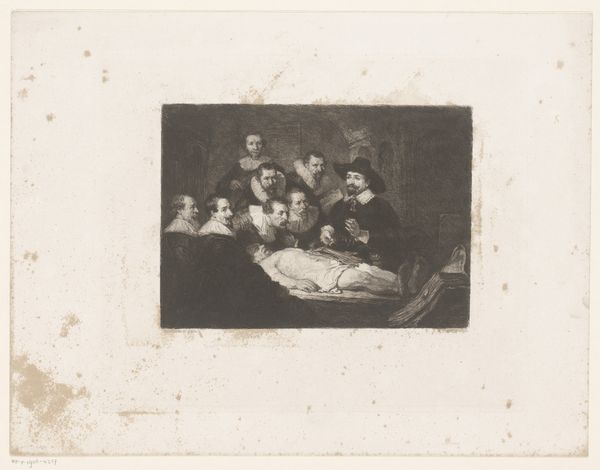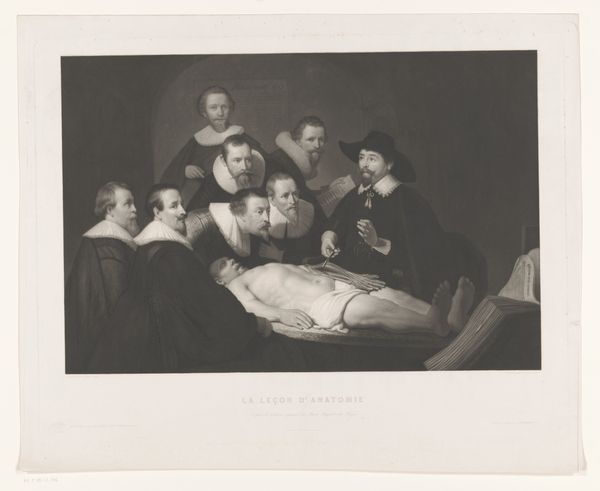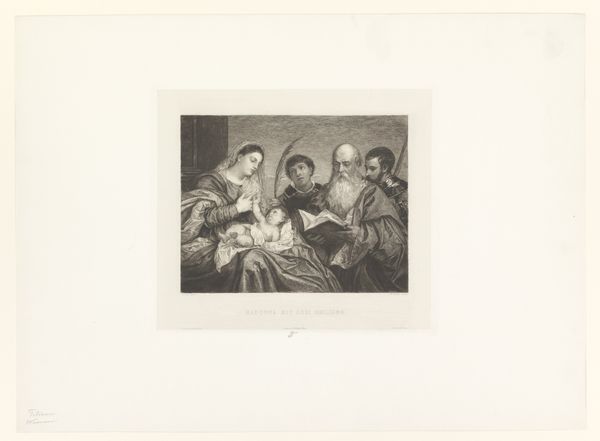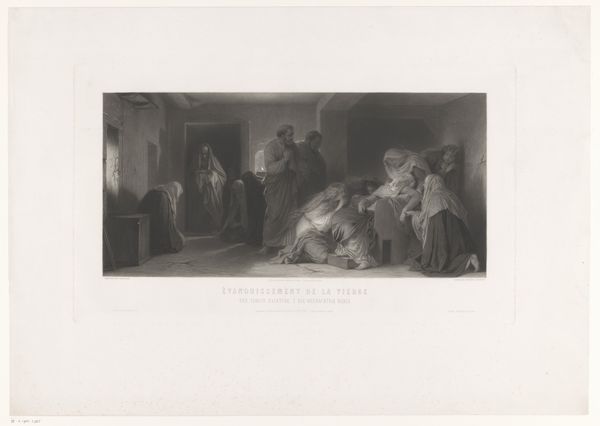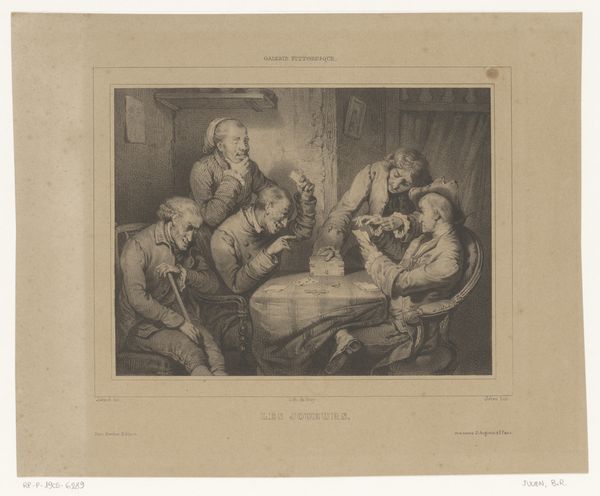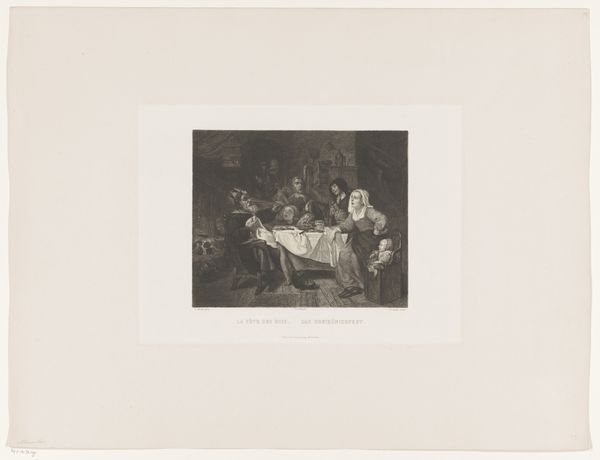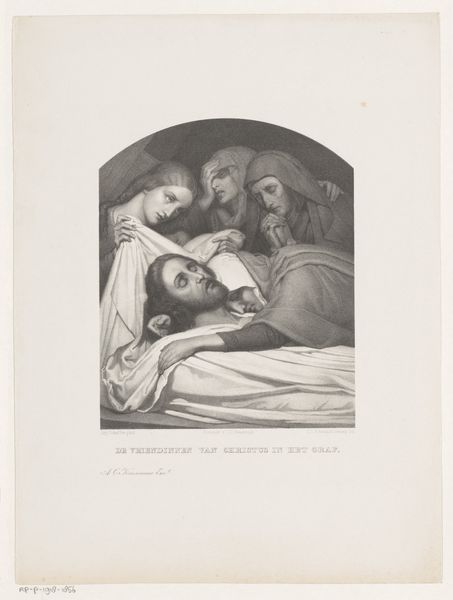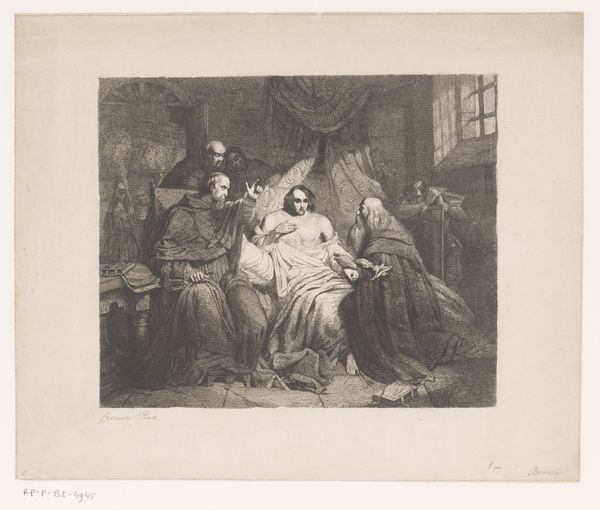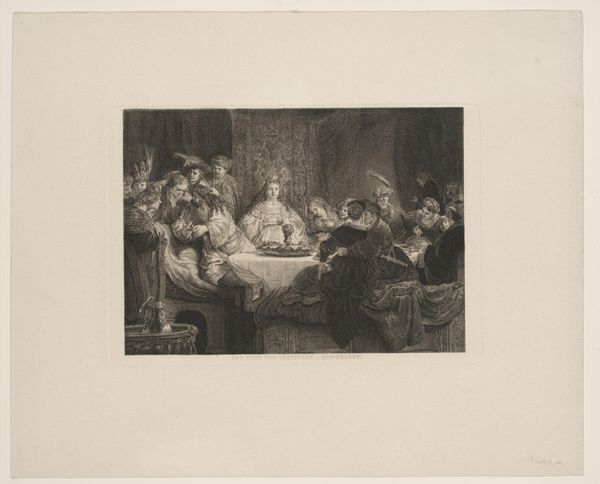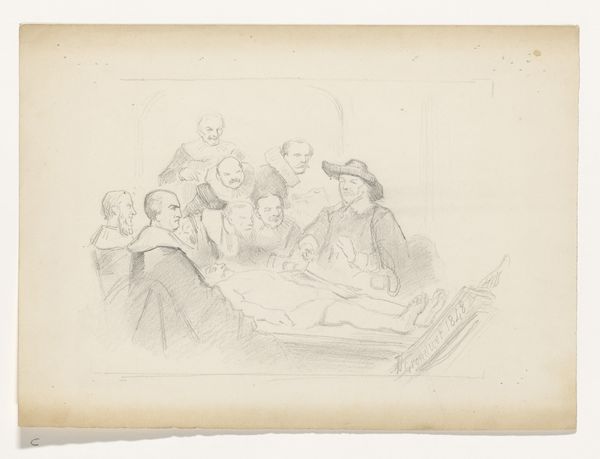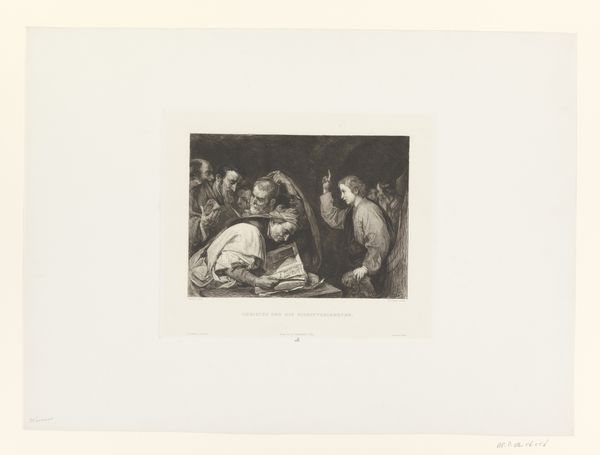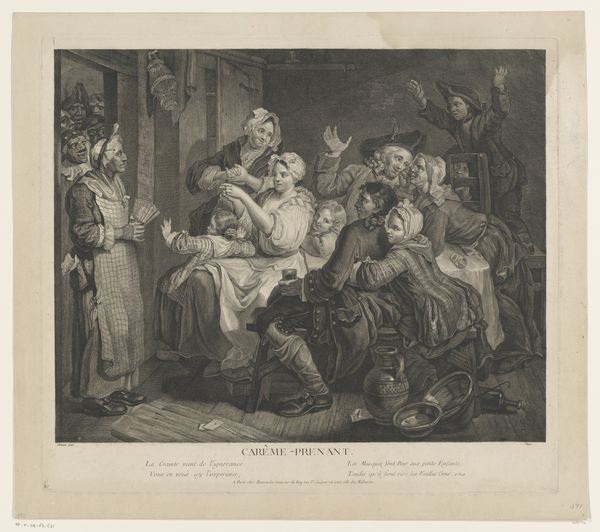
Dimensions: width 657 mm, width 878 mm
Copyright: Rijks Museum: Open Domain
Curator: Right, let's dive into this compelling image. We're looking at "Anatomische les van Nicolaes Tulp", or "The Anatomy Lesson of Dr. Nicolaes Tulp", an engraving made sometime between 1828 and 1849 by Hermanus Johannes van den Hout, after Rembrandt’s iconic painting. It resides here at the Rijksmuseum. Editor: What strikes me first is the light, or lack thereof! The stark contrast makes the cadaver the immediate focal point, almost unsettlingly so. The onlookers seem shrouded, as if in conspiracy or hushed reverence. What's the vibe you get? Curator: The "vibe" is profoundly intertwined with the painting's role within its socio-cultural context. Anatomy lessons were major public events, showcasing the progress of medical science and solidifying the status of the surgeon's guild. This engraving allows those who may have missed seeing the original artwork the opportunity to grasp the advancements made by science during that time. Editor: Interesting. The detail achieved through engraving, though, transforms it into a slightly different animal, doesn't it? The starkness lends a kind of hyperrealism, devoid of the original painting's textural nuances. Almost cold, wouldn't you say? Curator: Cold, perhaps, in its calculated reproduction, yes. But don't discount the democratization it offered. This engraving circulated ideas and imagery far beyond the elite circles who witnessed the actual dissection. Think about its presence in medical schools, learned societies – spreading anatomical knowledge. It's a public service, a dissemination tool. Editor: True. A public service… rendered with such exquisite grimness. The faces peering in—a mixture of curiosity, unease, and outright fascination. It makes you wonder what *they* thought they were seeing, and what *we* are meant to see now, centuries removed. Curator: Well, it is a tableau frozen in time— a pivotal moment where art, science, and the macabre intertwined, and van den Hout managed to translate much of that historical gravity into a more accessible, enduring format. Even now, discussing it. It retains that unsettling tension between knowledge and mortality, doesn’t it? Editor: It certainly does. The image itself seems almost like a historical artifact presented for contemplation. There's an undeniable story, no matter how morbid the medium, being broadcast to generations to come.
Comments
No comments
Be the first to comment and join the conversation on the ultimate creative platform.


